A Guide to Dining Room Table Styles
By Bailiegh Basham · November 25, 2019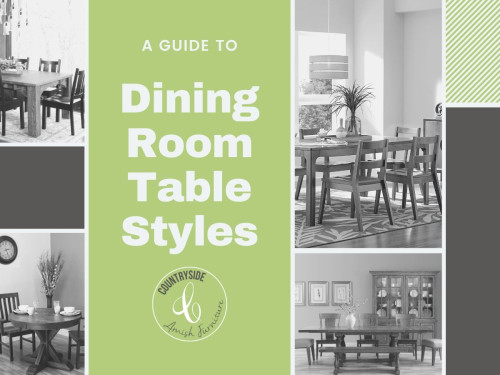
Before purchasing your next dining table, these are the things you should know.
Amish-made custom dining room furniture is an investment worth making. At Countryside, you determine the hardwood, stain, and details that our craftsmen will utilize when building your new dining room or kitchen table. This means your table is a one-of-a-kind, heirloom-worthy table that will be passed down for generations. Before purchasing your next dining table, this guide will explore the following:
- Common dining table materials
- Types of dining tables
- Dining table design styles
- The anatomy of a dining table
Dining Table Material
A dining table can utilize a wide variety of materials in its construction. Each material is designed to enhance the unique characteristics and design style of the dining table. Below are common materials often found in dining table construction:
- Wood
- Stone, such as marble or granite
- Metal
- Glass
Which dining table material should you choose? The answer to this question depends on your lifestyle, design style, and the amount you're willing to spend on a table. Material can also impact durability, so it’s important to take into consideration the normal wear and tear your table might encounter during daily use.
Types of Dining Tables
Design style impacts both the look and functionality of your table. Below are some of the most common types of dining tables:
Single Pedestal Tables
These tables stand on a large, single "leg" and are available in a variety of shapes and sizes. It is easy to push your chairs flush to this type of table, but long legs may not enjoy the center impediment. Single pedestals are great for round tables, small tables, and/or pub tables in your eat-kitchen or breakfast nook. For your dining room, a single pedestal table works best when used for seating fewer than eight. When expanded further, it can be prone to tipping if someone leans on one end or the other.
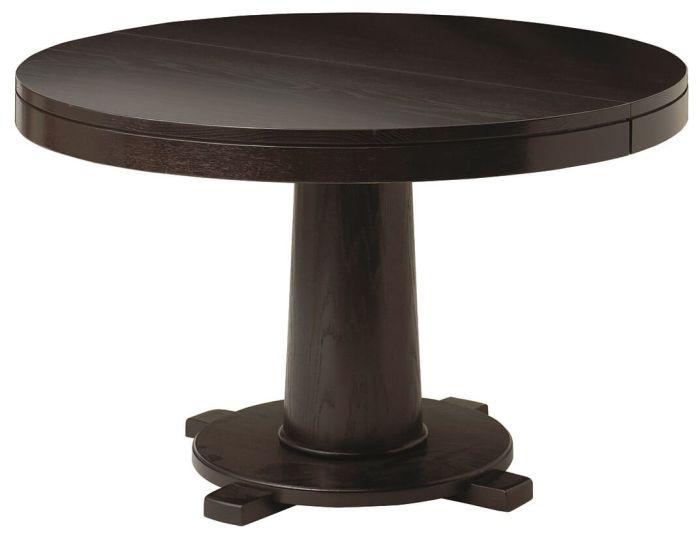
Double Pedestal Tables
Two pedestals are better than one in a very large dining room. All pedestal tables "open" to accept leaves on geared slides, so they are easy to expand. The balance afforded by a double pedestal base, however, allows this type of dining table to open to seat 12 or more with relative ease. Double pedestal tables also tend to look a little more formal in your dining room.
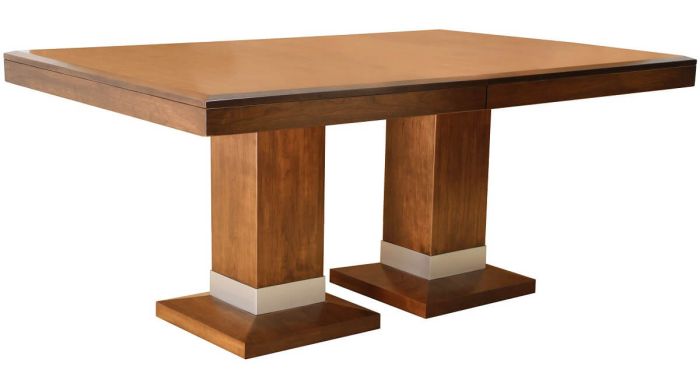
Leg Tables
Incredibly versatile, the leg table is the most common table of all. At Countryside, most of our leg tables will add a fifth leg centered under a leaf for stability if you add several leaves. We offer dining room and kitchen tables that expand to more than 20 feet in length. Sometimes, several legs are added for support. Wooden slides are typically used for the expansion of leg tables.
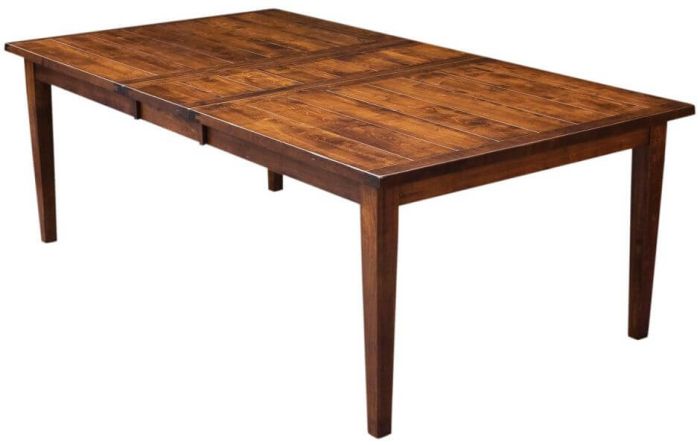
Trestle Tables
The first known tables specifically for dining were trestle tables. Trestles add strength and stability to your dining surface and allow some design elements not available in other types of kitchen and dining tables. Expansion for leaves is accomplished with geared slides so that the tabletop slides apart and the trestle remains intact.
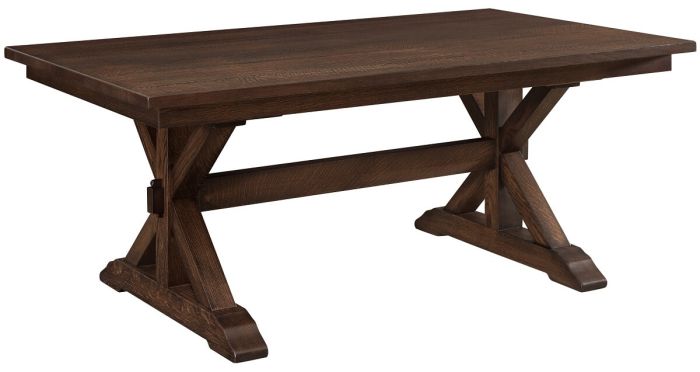
Expansion Tables
Expansion tables are simply tables that can be made larger by adding a leaf of some kind. Pictured above is a trestle table that has opened on geared slides to accept leaves.
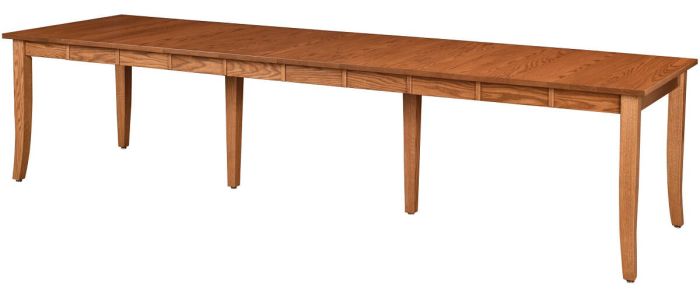
Butterfly Leaf Tables
Butterfly leaf tables completely self-store their expansion leaves. The leaves will fold so that they can be inserted underneath the closed tabletop. It is important to consider that butterfly leaves will have a seam just like any other leaf, as well as a seam in the center for folding. There is quite a bit of engineering involved in this leaf, so it is important to maintain and care for these tables properly. Butterfly tables, however, are incredibly convenient and come in a number of styles, shapes, and sizes.
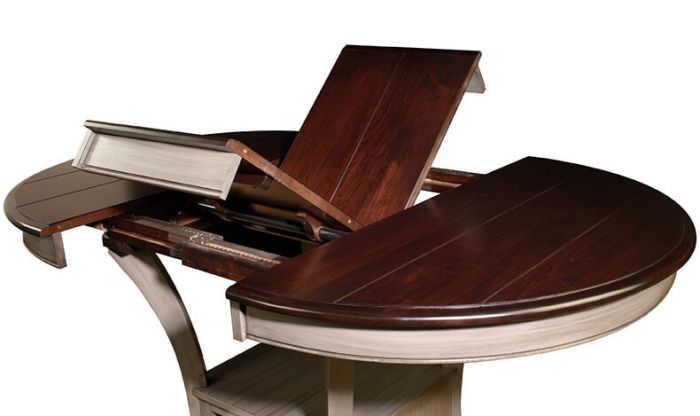
Pull-out Console Tables
Pull-out tables are usually contained in a cabinet that appears to be a buffet server or sideboard. Several leaves will be stored within and can be added as needed for additional seating.
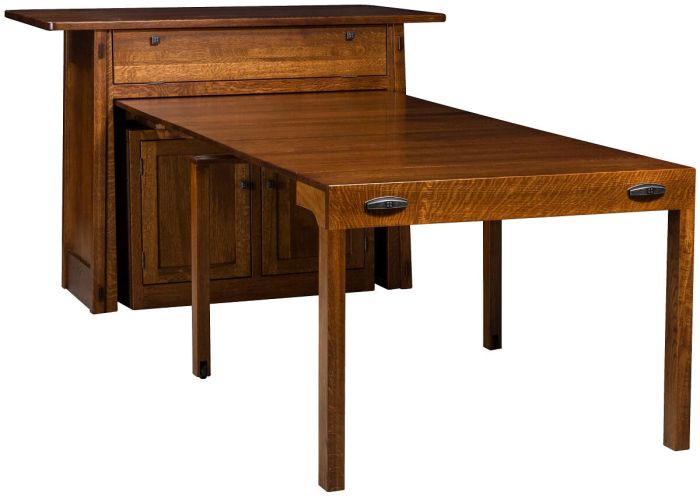
Refectory Tables
One of the earliest expanding tables, the refectory table expands from the ends, not the center as in traditional tables. Leaves are self-stored in the table ends and typically allow for two additional place settings each.
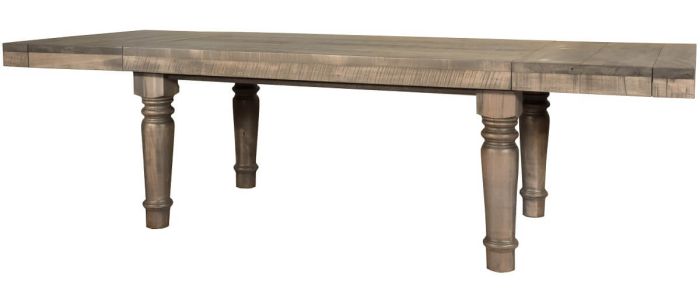
Drop Leaf Tables
Similar to the refectory table, the drop leaf table is an Early American take on the transitional table. When the leaves are dropped, the table can serve the purpose of a sofa table or bookcase, but when both leaves are "up", use for seating guests for dinner can be accomplished.
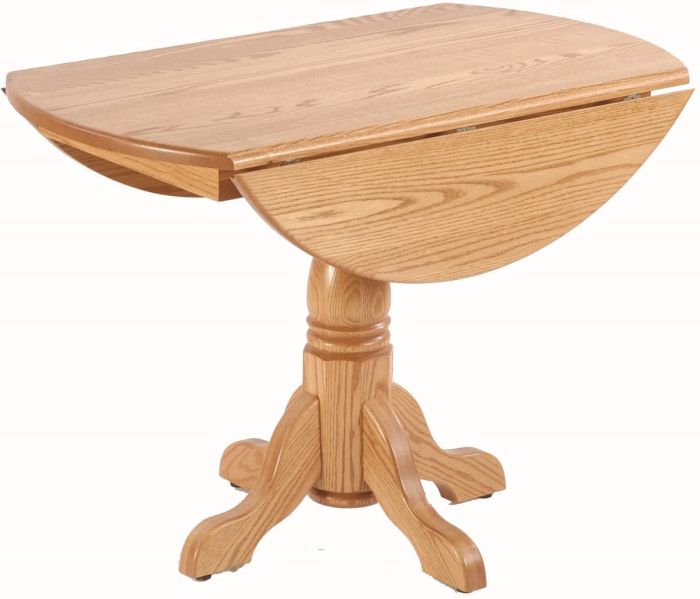
Dining Table Styles
The style of your table will impact the overall look and feel of your dining room. It can either be the statement piece of your dining room or match existing furniture pieces throughout your home.
Arts & Crafts
Influenced by artist William Morris, Arts and Crafts was the style of the craftsman movement, which sought to recapture the craftsmanship found in pre-industrial guilds. It's characterized by a simple, utilitarian design.
Traditional
Traditional style is rooted in European sensibilities. It makes use of classic styling and symmetry to create a calm, orderly decor; it often features dark, finished hardwood and curved lines.
Farmhouse
Farmhouse style is a blend of form and function. It includes hardworking furniture pieces with warm and age-worn materials to create the rustic elegance of a simpler time.
Mission
Characterized by the ideals of simplicity, Mission furniture represents the integrity of construction and truth to the materials. Joints are often exposed and the natural characteristics of the wood are emphasized.
Shaker
Characterizing the Shaker values of plainness, practicality, and pride, this style includes decoration in the structure of the piece. It's characterized by clean lines, tapered legs, and minimalist designs.
Queen Anne
Queen Anne style furniture emerged during the reign of William III of England. It is characterized by cabriole legs, pad or drake feet, fiddle-backed chairs, and bat-wing-shaped drawer pulls.
Contemporary
Contemporary style furniture refers to furniture that is popular today. Modern furniture often looks clean, lines are simple, uncomplicated, and the overall appearance tends to be fresh.
French Country
French Country, or Provincial style, is inspired by the styles popular in the French provinces in the 17th and 18th centuries. This style has an overarching farmhouse inspiration.
Anatomy of a Dining Table
Dining Table Apron or Skirt
Also known as a skirt or skirting, the apron is the framing under your tabletop. In self-storing leaf tables, the apron also disguises the engineering required to house the leaves. You will notice that Countryside will tell you a table "self-stores 4 leaves, 2 with aprons". This means that four of your expansion leaves can be self-stored, but two will not include the apron portion of the tabletop. This allows the non-skirted leaf to nestle into the one with an apron for storage. When in use, however, a gap will be visible on the leaves that do not include an apron. If you need four leaves and want all four to have aprons, that is not a problem. Store two in your table and two in a closet. If you are going to use a tablecloth most of the time, you will likely prefer the self-storing option with two leaves, not including the skirting.
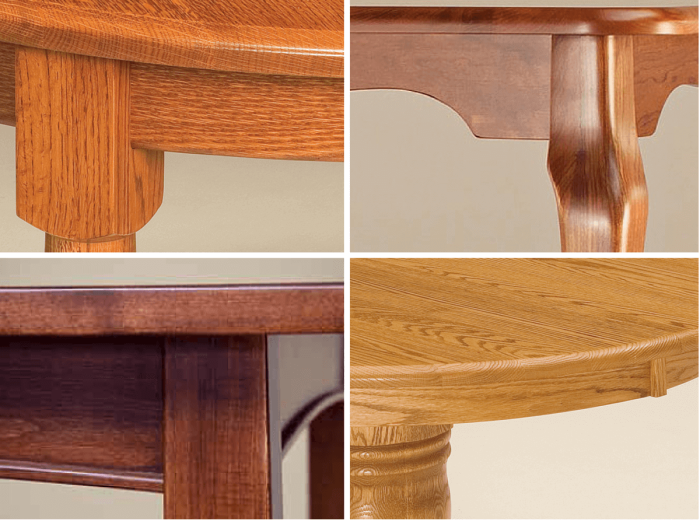
Dining Table Edges
The edge of the table is exactly what it sounds like. Many of our tables allow you to choose the shape of the table's edge, and these options vary with each table design. When choosing your edge, consider who will be using it. A straight Mission or subtle beveled edge is most popular, while more ornate table styles benefit from more decorative edge options such as chamfer, ogee, or thumbnail. Rounded edges are great for homes with children. Rounded, or roundover, edges are not sharp, are easy to clean, and don't tempt little ones to drive toy cars in the "groove". Consider these factors when choosing your table's edge.
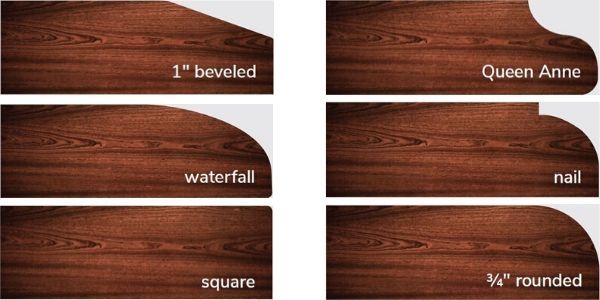
Dining Table Legs
When you are offered the opportunity to select your table leg, you can rest assured strength and stability have already been considered. The leg of your table should fit the style of your dining room or kitchen and help your table complement other pieces in the room. Some common table leg styles includes turned legs, ideal for farmhouse tables, along with reeded, cabriole, and tapered.
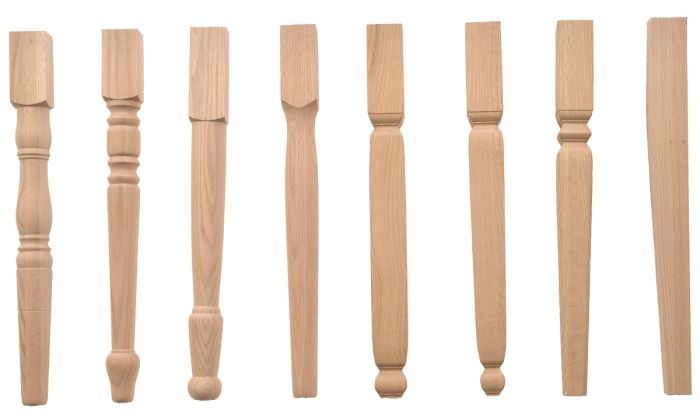
Dining Table Height
Standard dining table height is 30 inches. Pub and gathering tables, however, are 36" and 42" tall respectively. Also known as counter height (36") and bar height (42"), these tables are trendy and novel. Perfect for eat in kitchens, breakfast nooks, and game rooms, these tall tables are fun for family and built to last just as long as Countryside's dining tables.
Determining Dining Room Table Shape & Size
Table shapes vary greatly. Your tastes, space, and needs will determine if round, rectangle, square, or oval is right for you. When measuring your room for table size and shape, be sure to include chair clearance into your calculations. You will want a buffer zone around the table for pulling out chairs and traffic flow around the table. To find pieces that fit in skinnier rooms, check out our specially chosen narrow dining tables.
Once you have determined the shape and style of the table you want, it is important to evaluate how many guests you need to seat on occasion. Due to alignment, grain matching, and finish integrity, it is optimal to order all the expansion leaves you think you may ever need when you first order your table. If you are calculating the number of guests you anticipate, be sure to allow enough space. Officially, the industry recommends 27" per person for comfortable seating. For the holidays or when including small children, however, 24" per person can be acceptable.
The width of your table will determine how many people can be seated at the ends, how much room you have for center service, and the number of leaves your table will self-store. Table width can also have an impact on the final price of your table as well as each leaf. To determine the most appropriate table size for your needs, visit our Dining Table Seating Capacity Guide for more information.
A Note on Dining Chairs
Remember, you will also need chairs with your dining or kitchen table. Typically, your chair budget will exceed what you spend on your table. Consider the style, shape, height, and size of your table when ordering companion chairs. Or, consider a dining table set for a one-stop-shop option. Armed with this information, we hope you will have an amazing experience ordering a dining or kitchen table from Countryside.

